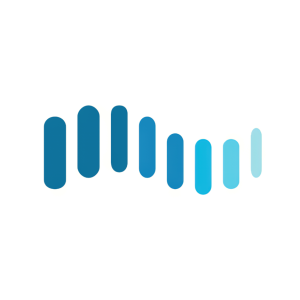Nevro Delivers Long-Term Relief with High-Frequency Spinal Cord Stimulation: 24-Month Data Demonstrates Profound Improvements for Non-Surgical Refractory Back Pain
Data Published in Journal of Neurosurgery: Spine Highlight Lasting Pain Relief, Enhanced Function, Quality of Life, and Reduced Opioid Dependency with High-Frequency SCS Therapy
Acute back pain causes more disability around the world than any other condition1 and a quarter of adults in the
The published 24-month data evaluated outcomes for NSRBP patients treated with Nevro's high-frequency (10 kHz) spinal cord stimulation (SCS) system plus conventional medical management (CMM) versus CMM alone. The data show that patients in the high-frequency SCS arm experienced profound improvements in pain, function, and quality of life, plus reduced opioid use compared to the CMM arm at 24 months. The long-term data provides further evidence of the benefits of high-frequency SCS in managing patients with NSRBP.
"People with NSRBP live with pain that can be both physically and emotionally debilitating, affecting their ability to manage their everyday lives," said principal investigator Dr. Leonardo Kapural, physician and researcher at the Carolinas Pain Institute and Center for Clinical Research. "Patients often turn to unproven treatments – some with potentially significant harms, like opioids – when they feel they've run out of options to reduce their pain. We can see through these data that high-frequency SCS is capable of giving patients the relief, function, and quality of life improvements that many are desperate to find."
The 24-month data demonstrated the following benefits for the 125 patients who received 10 kHz Therapy™ within the RCT:
Pain Relief
81.6% of all patients who received a permanent implant were classified as pain responders (achieved ≥50% pain relief) at 24 months, with58.4% of patients classified as profound responders who achieved ≥80% pain relief.- The mean back pain (as measured by the visual analog scale VAS) significantly decreased from 7.4 at baseline to 1.9, representing a 5.5-point (
74% ) decrease from baseline.
Function
- Patients reporting a severe level of disability (based on the Oswestry Disability Index, ODI) decreased from
73% at baseline to26% of patients at 24 months. 75.2% of patients were classified as ODI responders, achieving a ≥10-point improvement in ODI score. This signals improvements in the ability to perform daily living activities.
Quality of Life
- Mean EuroQoL-5 Dimension-5 Level (EQ-5D-5L) instrument index score was significantly increased from 0.570 at baseline to 0.766 at three months after implantation. This 0.19-point improvement was maintained at 6, 12, 18, and 24 months after implantation. This score represents ≥2.5 times the minimal clinically important improvement.
- High levels of patient satisfaction were recorded at 24 months, with
76% of patients reporting their condition was "better" or "a great deal better" on Patient-Reported Global Impression of Change (PGIC). - Opioid usage was decreased or stopped in
62% percent of patients who were using opioids at baseline, with the mean dose decreasing from 35±39 morphine milligram equivalent (MME) at baseline to 15±35 MME at 24 months.
Safety
- No new safety signals were identified during the 24-month follow-up, with most study-related adverse events occurring in the first six months after permanent implantation and no additional serious adverse events beyond the six reported at 12 months.5,6
- The observed safety profile is consistent with types and rates of real-world adverse events reported for high-frequency SCS, as well as safety outcomes generally associated with SCS.7
"When patients with chronic low back pain don't improve with conventional therapies and aren't good candidates for spine surgery, it can leave both the patient and their care team feeling frustrated by the lack of options," said study investigator Dr. Naresh P. Patel, associate professor of Neurosurgery and vice chair of the Department of Neurological Surgery at Mayo Clinic in
Internet Posting of Information
Nevro routinely posts information that may be important to investors in the "Investor Relations" section of its website at www.nevro.com. The company encourages investors and potential investors to consult the Nevro website regularly for important information about Nevro.
About Nevro
Headquartered in
Senza®, Senza II®, Senza Omnia™, and HFX iQ are the only SCS systems that deliver Nevro's proprietary 10 kHz Therapy. Nevro's unique support services provide every patient with an HFX Coach™ throughout their pain relief journey and every physician with HFX Cloud™ insights for enhanced patient and practice management.
SENZA, SENZA II, SENZA OMNIA, OMNIA, HF10, the HF10 logo, 10 kHz Therapy, HFX, the HFX logo, HFX iQ, the HFX iQ logo, HFX Algorithm, HFX CONNECT, the HFX Connect logo, HFX ACCESS, the HFX Access logo, HFX COACH, the HFX Coach logo, HFX CLOUD, the HFX Cloud logo, RELIEF MULTIPLIED, the X logo, NEVRO, and the NEVRO logo are trademarks or registered trademarks of Nevro Corp. Patents covering Senza HFX iQ and other Nevro products are listed at Nevro.com/patents.
To learn more about Nevro, connect with us on LinkedIn, Twitter, Facebook and Instagram.
*Senza HFX iQ™ uses a fixed set of instructions to provide optimized treatment recommendations that utilize direct patient input from assessments on pain and quality of life measures.
Investors and Media:
Nevro Corp.
ir@nevro.com
1 Hoy D, March L, Brooks P et al. The Global Burden of Low Back Pain: Estimates from the Global Burden of Disease 2010 Study. Ann Rheum Dis. 2014; 73(6): 968–74.
2 Deyo R A, Mirza S K, Martin B I. Back Pain Prevalence and Visit Rates: Estimates from
3 Sources: US Census Bureau; CLBP Market Research; CMS OP Hospital SAF Data 2012–2018. www.neuromodulation.com/failed-back-surgery-syndrome-definition.
4 Chronic back pain patients who are refractory to conventional medical management, have no history of and are not candidates for surgery based on individual preference or surgeon consult
5 Kapural L, Jameson J, Johnson C, et al. Treatment of nonsurgical refractory back pain with high-frequency spinal cord stimulation at 10 kHz: 12-month results of a pragmatic, multicenter, randomized controlled trial. J Neurosurg Spine. Feb 11 2022:1-12. doi:10.3171/2021.12.SPINE211301
6 Eldabe S, Buchser E, Duarte RV. Complications of Spinal Cord Stimulation and Peripheral Nerve Stimulation Techniques: A Review of the Literature. Pain Med. Feb 2016;17(2):325-36. doi:10.1093/pm/pnv025
7 D'Souza RS, Olatoye OO, Butler CS, Barman RA, Ashmore ZM, Hagedorn JM. Adverse Events Associated With 10-kHz Dorsal Column Spinal Cord Stimulation: A 5-Year Analysis of the Manufacturer and User Facility Device Experience (MAUDE) Database. Clin J Pain. Feb 8 2022;38(5):320-327. doi:10.1097/AJP.0000000000001026
![]() View original content to download multimedia:https://www.prnewswire.com/news-releases/nevro-delivers-long-term-relief-with-high-frequency-spinal-cord-stimulation-24-month-data-demonstrates-profound-improvements-for-non-surgical-refractory-back-pain-301992810.html
View original content to download multimedia:https://www.prnewswire.com/news-releases/nevro-delivers-long-term-relief-with-high-frequency-spinal-cord-stimulation-24-month-data-demonstrates-profound-improvements-for-non-surgical-refractory-back-pain-301992810.html
SOURCE Nevro Corp.









